Balloon Surprise
Created by: Josh LeFevre and Nathan Serafin
The design brief:
“Make something surprising. It should be surprising explicitly in the sense that it does not do what most of your classmates expect it would. Giggles are preferred over gasps—aim to induce wonder and delight rather than fright.”
Simple overview
 A “hood” like container holds a balloon. This fixture suspends the balloon and components in the air above a door. Next to the balloon is a motor with a pin on it. When the door is opened and trips a sensor, the motor pushes a pin into the balloon causing the balloon to pop and confetti to fly.
A “hood” like container holds a balloon. This fixture suspends the balloon and components in the air above a door. Next to the balloon is a motor with a pin on it. When the door is opened and trips a sensor, the motor pushes a pin into the balloon causing the balloon to pop and confetti to fly.
THE BALLOON BUSTER
Process
Materials:
- Arduino Uno
- jumper wires
- Servo motor
- Protoboard/breadboard
- Magnetic door switch
- 10K resistor
- Cardboard
- Paper tape
- Fish line
- utility or xacto knife
Schematic
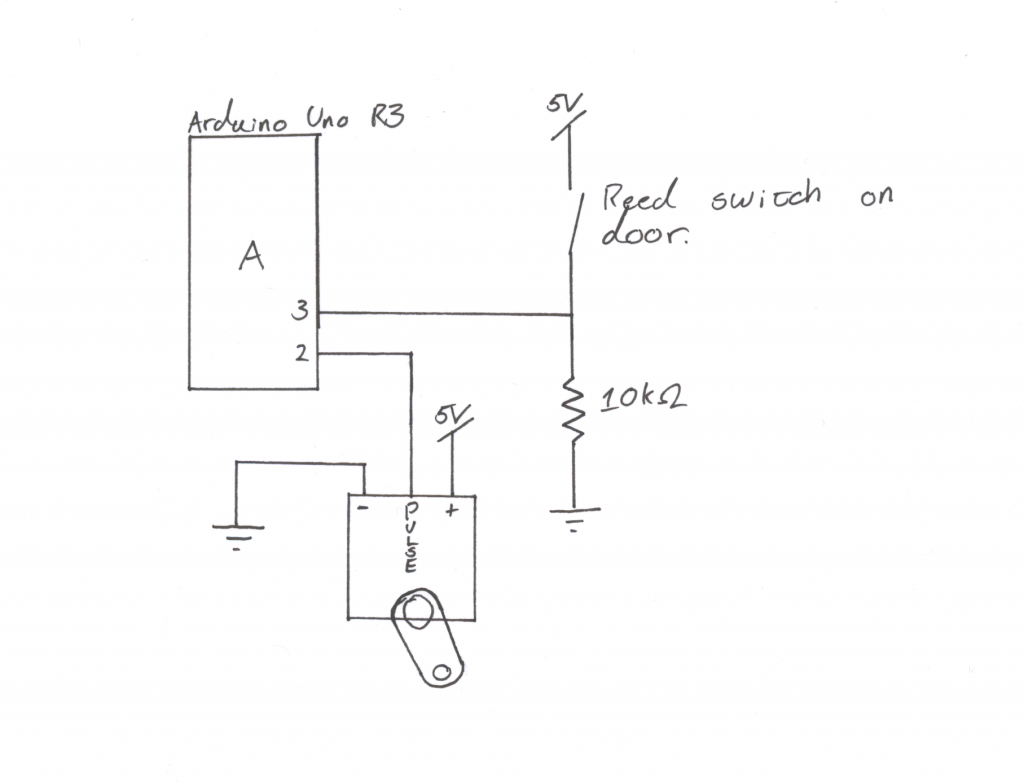
Code
/*
* Turn a servo when a switch throws.
*
* The intended use was to pop a balloon when a door opened.
*
* Copyright 2018 Josh LeFevre, Nathan Serafin
*
* Permission is hereby granted, free of charge, to any person obtaining a
* copy of this software and associated documentation files (the "Software"),
* to deal in the Software without restriction, including without limitation
* the rights to use, copy, modify, merge, publish, distribute, sublicense,
* and/or sell copies of the Software, and to permit persons to whom the
* Software
* is furnished to do so, subject to the following conditions:
*
* The above copyright notice and this permission notice shall be included in
* all copies or substantial portions of the Software.
*
* THE SOFTWARE IS PROVIDED "AS IS", WITHOUT WARRANTY OF ANY KIND, EXPRESS OR
* IMPLIED, INCLUDING BUT NOT LIMITED TO THE WARRANTIES OF MERCHANTABILITY,
* FITNESS FOR A PARTICULAR PURPOSE AND NONINFRINGEMENT. IN NO EVENT SHALL
* THE AUTHORS OR COPYRIGHT HOLDERS BE LIABLE FOR ANY CLAIM, DAMAGES OR OTHER
* LIABILITY, WHETHER IN AN ACTION OF CONTRACT, TORT OR OTHERWISE, ARISING FROM,
* OUT OF OR IN CONNECTION WITH THE SOFTWARE OR THE USE OR OTHER DEALINGS IN THE
* SOFTWARE.
*/
#include <Servo.h>
#define SERVO_PIN 2
#define DOOR_PIN 3
#define POP_ANGLE 120
Servo servo;
void setup()
{
pinMode(DOOR_PIN, INPUT);
servo.attach(SERVO_PIN);
servo.write(0);
Serial.begin(9600);
}
void loop()
{
int door_closed = !digitalRead(DOOR_PIN);
if (door_closed) {
delay(1000);
servo.write(POP_ANGLE);
}
else {
servo.write(0);
}
delay(50);
}
Steps
During this project we wanted to explore using stored energy. We settled on using a servo motor to pop a balloon and distribute confetti. Don’t you wish every class would welcome you with confetti?

Product of our initial design meeting.
IDEATION: The initial ideas were prototyped with whiteboard markers and papers. The ideas ranged from putting the balloon over the door, in box on a table, or doing away with the balloon and using release gates.
The idea that the Arduino is unable to supply a significant amount of energy guided our ideas towards storing energy beforehand, and having the Arduino simply release it. This made the balloon a good prospect.
We felt that a surprise would be best aided by first “startling” the user followed by something pleasant, which led us away from designs that relied on building up tension until the balloon unexpectedly popped.
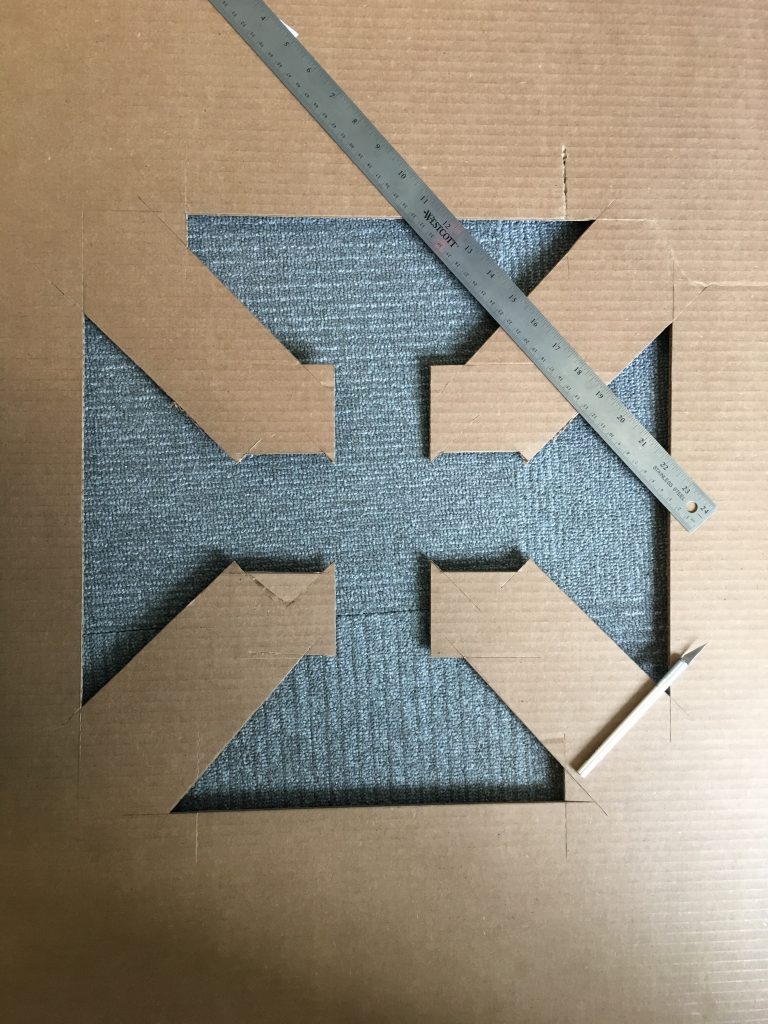
Cutout of hood.
PROTOTYPE: We measured and cut out a “hood” fixture to hold a 5-inch balloon in place, and wired up some simple electronics to sense the door closing and move the pin.
TESTING: We tested our mounting and popping of balloons over a trash can. Positioning the pin so that it popped the balloon when it moved, but didn’t when we were getting set up was a challenge: eventually, we put a piece of tape over the pin, which worked well. We were unable to acquire 5-inch balloons, so we had to be very careful not to over-inflate the 12-inch balloons we did get. We also realized that, while it seemed natural when the whole device was on the table for the balloon to pop when the switch was closed, that would have meant that when we first put it on the door the balloon would have been popped the moment we applied power.

Full system test.
For a full functional test, we installed our surprise over the classroom door. This allowed us to test the door magnet sensor.
Reflection
This project was a great exploration in using simple systems. Quite literally, the tools used were a simple switch and servo motor with a pin. The simplicity adds to the ability to surprise. In some respects, because the user doesn’t look for ways to figure out how the system works they are able to enjoy the surprise over and over again.
If we were to repeat this project, we would explore ways to make rapid or successive loading of the energy source (balloon) more streamlined and less cumbersome (one at a time).
We were also concerned about the confetti making a mess (which it did): we considered not using it, but that would have drastically reduced the joy of the project. While it was fun to startle people, it was even more fun to see the smiles as the confetti went everywhere, and as people walked around with it stuck in their hair.
Final photos
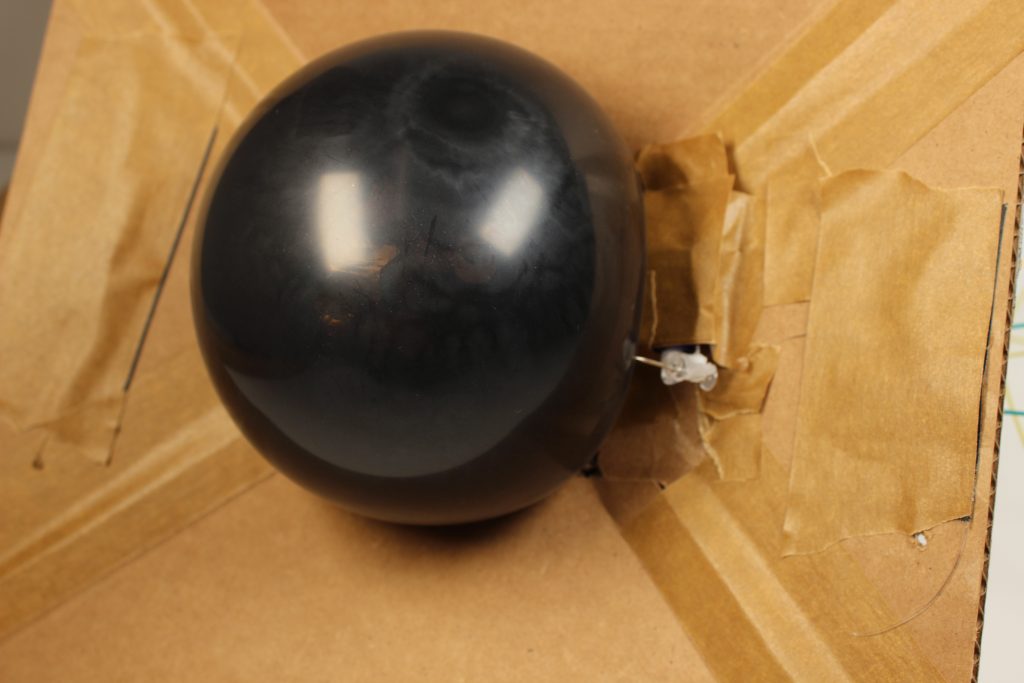
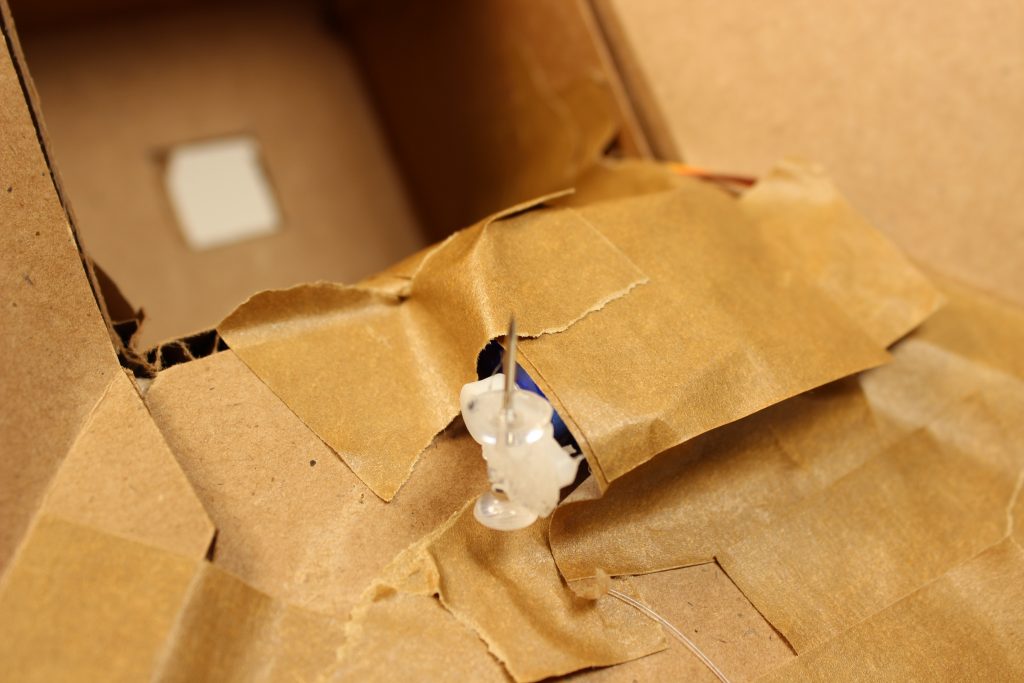
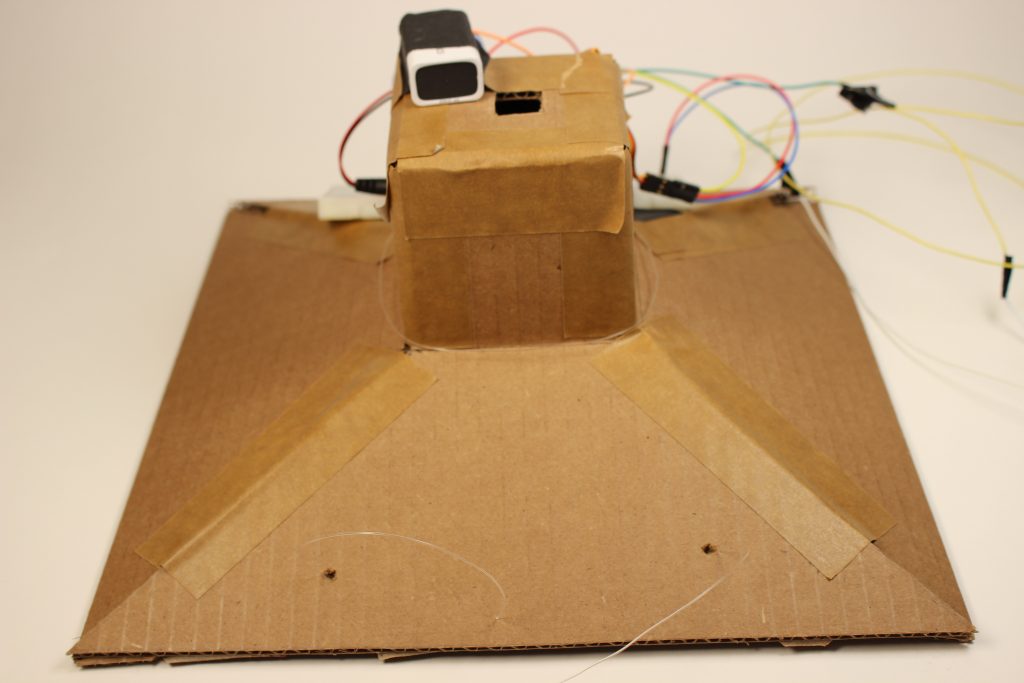
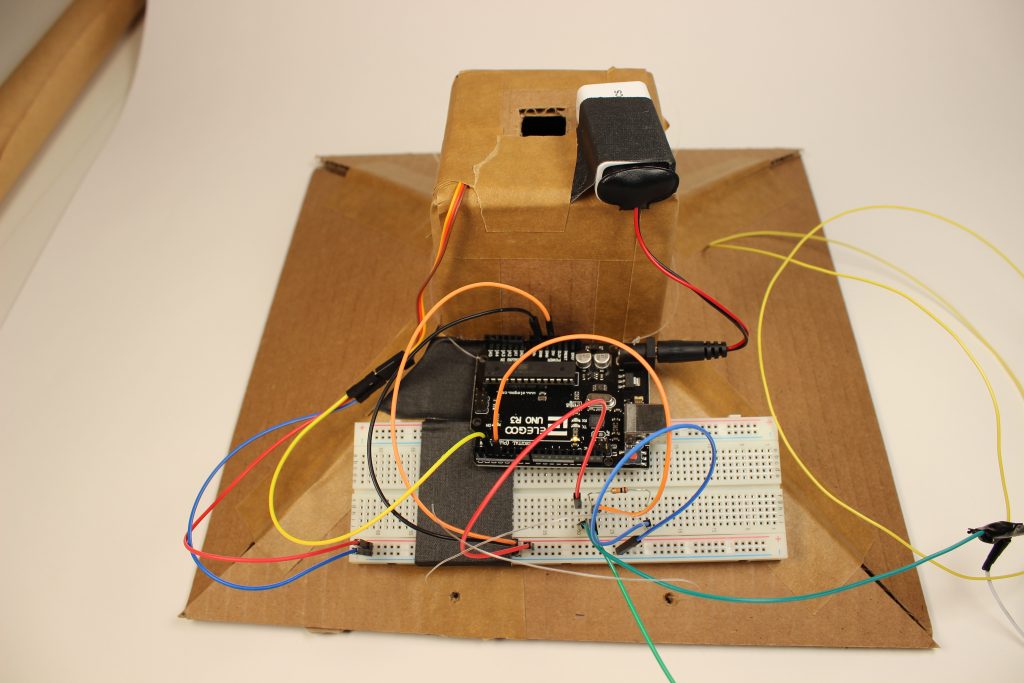
Leave a Reply
You must be logged in to post a comment.